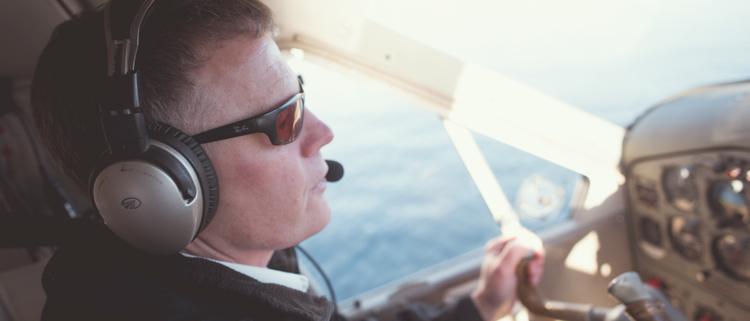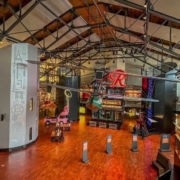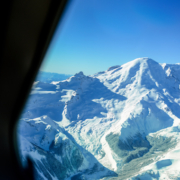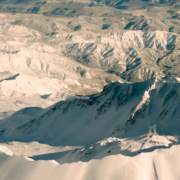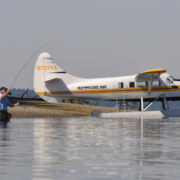What’s it Like to Take a San Juan Islands Ride-Along Flight?

There’s flying. And then there’s flying in a seaplane. Expansive skies, superlative views, and a front row seat to the controls await the adventure-hungry traveler aboard a San Juan Islands Seaplane Ride-Along.
It’s a morning to remember when you pretzel your 6-foot frame into the copilot seat of a de Havilland Beaver. (Don’t worry. There’s plenty of room in the footwell for both legs and feet once you’re in.)

The smell of old leather. The well-loved instrument panel. The rumble of the de Havilland Beaver’s radial engine as it taxis from the dock. It’s a thrill that crescendos with a takeoff over Seattle’s historic Gas Works Park and continues as the snowcapped mountains to the north, east, and west unfold around you.
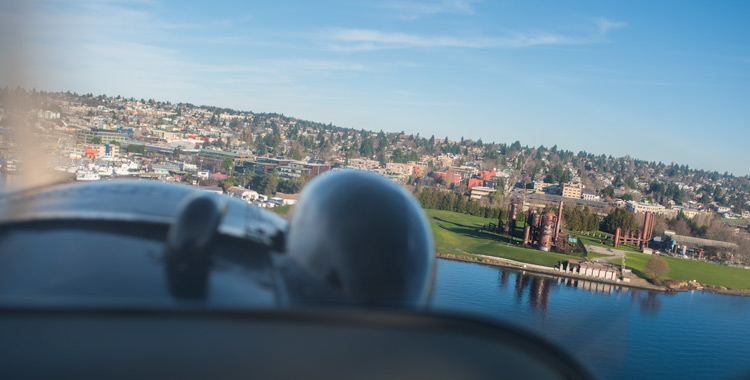
Flying at roughly 100 knots, flight time to the San Juans averages 45-minutes. Depending on the weather conditions, your pilot may take you as low as 500 feet. (This is a particular treat, as the breathtaking views of the coastline are unlike anything you’ll see aboard a large airline.)
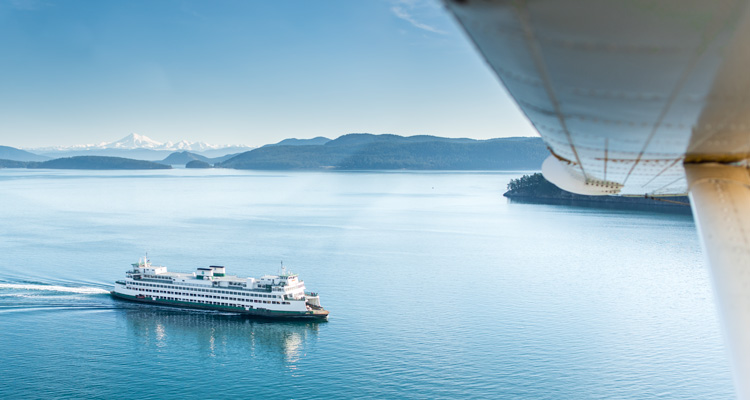
Generally, you’ll skim the skies at 1,000 – 1,500 feet. Beneath you, the coast beneath is speckled with lighthouses and rocky shores. The waterways act as a highway for ferry boats and cargo ships.
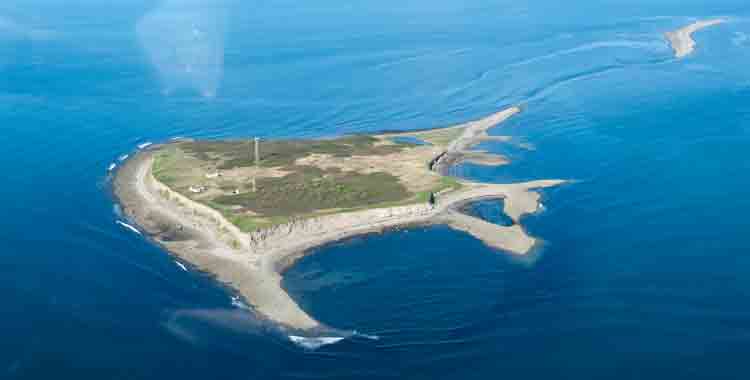
‘Smith Island’ by Tara Brown Photography
Be sure to keep an eye out for Smith Island, located in the eastern section of the Strait of Juan de Fuca. The bell-shaped plot of land is a part of the San Juan Island National Wildlife Refuge. It serves as an important habitat for seabirds.
The steeped bluffs of the island have gradually eroded. They have fallen into the ocean – including the island’s original lighthouse which clung precariously to the bluff during the 1980s until the spring of 1998.
A Day in the Life of a Seaplane Pilot
Destinations throughout the San Juans can range wildly. That’s just life for a Kenmore Air pilot. They never know where they’re flying until the day before, at the earliest. The ride-along may include one stop.

Or your trip (like mine), could include drop-offs at San Juan Island’s Friday Harbor and Orcas Island’s West Sound. It might conclude with a repositioning flight to Lopez Island’s Fisherman Bay for a pickup and then a stunning trip back to Seattle.

For some copilots, you might be treated to an up and back to the historic Roche Harbor or the ever-elegant Rosario Resort. Regardless of the destination, it’s sure to be stunning.
Book your San Juan Islands Ride-Along
Additional Things to Know About a San Juan Islands Seaplane Ride-Along
- Bring your camera. You’ll want it. I promise.
- If you’re shooting with a DSLR and are unfamiliar with aviation photography, Shutter Priority is a good way to go.
- Complimentary earplugs are provided by Kenmore. Wear them. The noise isn’t intolerable, but it’s certainly more comfortable when you have them in.
- Bring sunglasses. The glare can be intense, especially if you’re sitting up front. You’ll appreciate a pair of shades. Pro tip – during the winter months, bring a hat too. In the mornings, flying back towards Seattle, the sun’s perfectly positioned to light up the world brilliantly. Unfortunately, it can also be harsh on the eyes.
- Riding copilot isn’t guaranteed or necessary for a great flight. In fact, depending on weight dispersal needs, you pilot may ask you to sit in a different seat. But no matter where you’re sitting, you’ll have an amazing window seat view.
- You might not be in a Beaver. Kenmore also flies de Havilland Otters. Besides the Otters being larger (they carry 10 passengers to the Beaver’s six), Otters are outfitted with turbine engines. This helps them fly slightly faster.
- Stretch your legs after the flight with a walk to one of the best lunch spots around South Lake Union.

